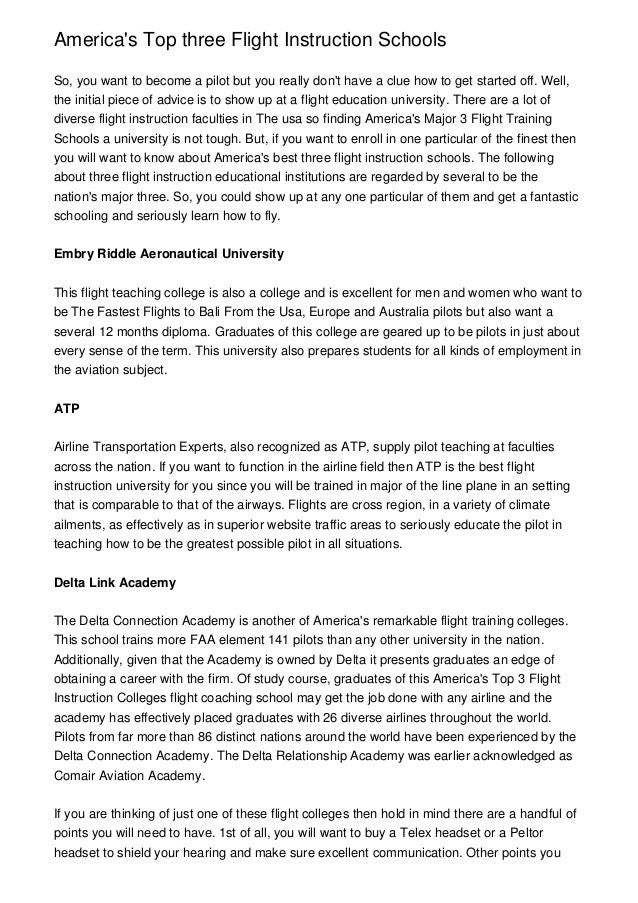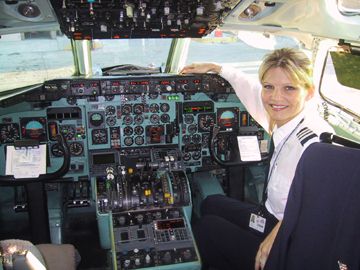
Mary Wells was wrong. She was the head of a trendy New York advertising agency back in the 1970 era and she once said...advertising is the most fun you can have with your clothes on.
Yes, advertising is fun, but compared to flying, advertising is just a little snuggle.I am often asked by dads and sometimes young folks, what do you have to do to become a pilot?
The journey can be a tough one. You have to get through lots of tests and ratings and frankly, you have to have some luck. I had my share.
I came out of the general aviation ranks. That means I went out to the airport, paid the nice folks $25 for a test flight, and $10,000 later, I was in the front end of a Learjet. Trust me, I got lucky. I had no business being in the front end of a Learjet at that time in my career.
Baby Pilot, one of my dearest friends, went to school to become a pilot...a pilot college if you will. He went about it just like you would go about becoming a teacher or a business person. He went to class and his classes were in the air. He is zooming around the skies in a 747 somewhere and was one of the youngest guys to ever become a 747 left seat driver. (Left seat is the captain. Right seat is the copilot. Sideways is the flight engineer.) Not all planes have engineers anymore. There role has been replaced by computers and demands by airlines to cut cost by cutting the engineer.)
Baby Pilot went to Emery-Riddle Aviation University. There is no guarantee you will get that cushy airline job just because you went to an aviation university! Aviation is a brutal lover. It is about supply and demand and standards are very high. It is a popular career, too. If you want to check, just ask five of your friend if they would like to know how to fly a plane? Then ask the same group if they would like to become a bridge designer. You will get the idea.
The government is the biggest supplier of pilots. The Air Force, Army, Navy, and Marines turn out tons of them and these pilots are popular with the airlines. Delta loves them! If you want to become a pilot and serve your country, why not check out the services? Most of the service pilots will come out of the officer corps so you should check into the service academies and use some congressional pull to help get you in. Frankly, having some pull is another big part of aviation. You will need some. Make pilot friends. Go to the airport and say hello.
You also have to be healthy. In fact, everything revolves around you being healthy. A pilot's license is good for life but you have to have a current medical certificate before you can get in a plane and fly it. There are three medical classes.
Third Class Medical. Your heart is beating. You can hear fairly well. You can see. Get this and you can fly but not for hire. In other words, you can fly but not be paid for it--no career potential. The certificate is good for three years and you have to be examined by a doctor certified by the Federal Aviation Administration (known as the FED's).
Second Class Medical. This one is a little more complex. It's usually reserved for pilots who get paid to fly but who are not airline captains. It's good for one year.
First Class Medical. Any pilot sitting in the left front of a commercial airliner has to have this medical certificate. It's a much more complex exam and is only good for six months.
If you are wondering what it will take to become an airline pilot, here's a great place to start. Find an approved FAA doctor--the pilots at the airport can help you with that or ask your family doctor--and get a first class medical exam. If you pass, you have a shot at being an airline captain if you stay healthy. If you don't pass, get passionate about something else and save yourself tons of money and frustration! Plus, you get a cheap physical.
On to the business of learning how to fly.
Category. Class. Type. Those are important words to the FED's and you! It's how the FED's sort things out and see who is qualified to fly what. Category refers to stuff in the air...plane, airship, balloon yada. Class refers to single engine, multi-engine. Type refers to the type of airplane. Think Ford...Pickup...F-150.
If an airplane is over 12,500 pounds in weight, you need an airplane type rating to fly it. In other words, you need a type rating to fly a 737 but that rating will not let you fly a 747 or a Learjet.
The FED's, or pilots they appoint, check you out to make sure you can fly that equipment. That little demonstration is called a check-ride. Today, most check-rides are given in simulators at the airline level and in the airplane at the little plane level. So, to sum up so far, in order to be a pilot, you will need:
1. A current medical certificate.
2. Rated for the category, class, and type of plane you want to fly.
Congrats. You can fly on nice sunny days! But what happens if it is cloudy and foggy? Well, you will need an instrument rating. You will have to learn how to fly using the information presented to you in the airplane without any benefit of outside such as where the sky is and where the ground is. Ground school, flight training and check-ride required. This rating makes a pilot a pilot.
Now you have:
1. A current medical certificate.
2. Rated for the category, class, and type of plane you want to fly.
3. An instrument rating.
Pretty big stuff! Now do you want to make a living at it? Well if you do, you will need a commercial pilot rating. The FED's want to know if you can fly the plane smoothly and with exact precision. That is import if you don't want to spill your coffee. Flight training and Check-ride required. Now you have:
1. A current medical certificate.
2. Rated for the category, class, and type of plane you want to fly.
3. An instrument rating.
4. A commercial rating.
Plenty neat. Now you really are hot stuff. You can fly a single engine land plane in the clouds smoothly and be paid for it. But how many single engine airliners are there?
The FED's want to see more from you and the more is called a multi-engine rating. Can you safely fly something with one or more motors going or one of those motors not going? Flight training and check-ride required. Now you have:
1. A current medical certificate.
2. Rated for the category, class, and type of plane you want to fly.
3. An instrument rating.
4. A commercial rating.
5. Multi-engine rating.
Now comes the toughest test of all and the FED's have nothing to do with it. The insurance companies call this one. Those folks want to see some experience before you go zooming off into the clouds and pay-for-play skies. 1,500 hours of flying experience would be dandy!
But not many people have the bucks to fly around for another 1,000 or so hours at $75 an hour to build the time to reach that magic 1,500 hour mark. What do young pilots do?
Back to the ratings. Pilots teach other pilots how to fly and it is often the young 500 hour pilots that become the teachers. They are called flight instructors There is ground school to take and a check ride from the right seat. That will allow them to teach new pilots how to fly on sunny days. Get an instrument instructor rating and you can teach new pilots how to fly in clouds. Get a multi-instructor rating; and you can teach them how to fly multi engine airplanes.
Get the picture? You can log the needed time sitting in the right seat and nagging a young pilot in the left seat like an ex-wfie at a son's wedding. Plus, the student pilot pays and you get paid to teach.
Last but not least, the ATP or Airline Transport Rating. You need 1,500 hours of experience to get this one. It's the master's degree of aviation. The ATP will help you get a better job.
Hopefully, you will, but always remember, there are a lot of pilots out there and as fuel prices go up and airlines merge and fold, the number of jobs is getting tighter. It's a tough business. It demands perfection. And it takes luck to get in.
But once you do, sorry Mary Wells, it's the most fun you can have with your clothes on!
If you like Kenny's writing and have a Kindle, you will love his four star aviation thriller, The Africa Bomb. Enter a tension filled cockpit and see if co-pilot Chance Mikelson will do what he has to do in order to prevent a major disaster. If you ever wondered what it was like to fly a modern business jet, this is your story. Here's the link http://www.amazon.com/The-Africa-Bomb-ebook/dp/B003XVYGX0/ref=sr_1_1?ie=UTF8&qid=1286121060&sr=8-1
Just copy and paste into your browser.




















